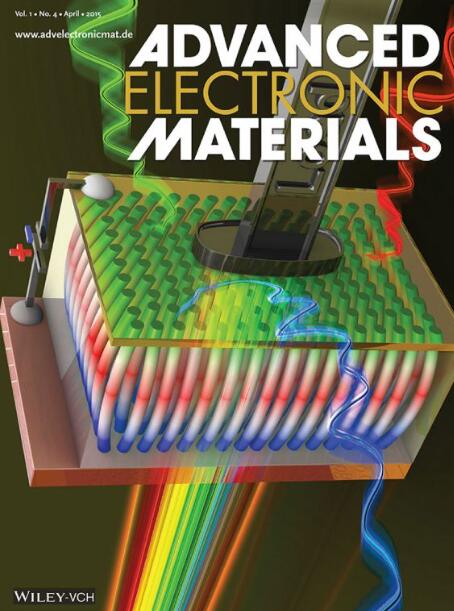基于窄带隙共轭聚合物半导体的辐射硬化红外探测器
IF 5.3
2区 材料科学
Q2 MATERIALS SCIENCE, MULTIDISCIPLINARY
引用次数: 0
摘要
空间任务严重依赖于在电磁波谱的近至长波红外(NIR - LWIR, λ = 0.9-14µm)区域工作的传感器。这些传感器捕获的数据超出了传统光学工具和传感器的能力,对于探测热辐射、进行大气研究和监测至关重要。然而,传统的NIR - LWIR探测器依赖于体积庞大、低温冷却的半导体,由于其高成本、尺寸、重量和功率(C - SWaP)需求,使得它们在更广泛的空间应用中不切实际。本文演示了一种使用溶液处理的窄带隙共轭聚合物的红外光电探测器。这种直接带隙光导体在没有冷却的情况下表现出卓越的红外灵敏度,并且在高达1000克拉的电离辐射暴露(相当于在最强烈的低地球轨道(LEO)中工作三年)后,其质量指标变化最小。与外延碲化汞镉(HgCdTe)和砷化铟镓(InGaAs)光电二极管相比,其辐射硬度分别提高了7.7倍和98倍,其性能和抗辐射弹性明显超过传统的无机探测器,提供了一种更经济、更紧凑、更节能的替代方案。这类有机半导体为C‐SWaP优化的红外空间传感技术提供了一个新的前沿,使新的航天器和任务的发展具有增强的观测能力。本文章由计算机程序翻译,如有差异,请以英文原文为准。
Radiation Hardened Infrared Photodetectors Based on a Narrow Bandgap Conjugated Polymer Semiconductor
Space missions critically rely on sensors that operate throughout the near‐ to longwave infrared (NIR – LWIR, λ = 0.9–14 µm) regions of the electromagnetic spectrum. These sensors capture data beyond the capabilities of traditional optical tools and sensors, critical for the detection of thermal emissions, conducting atmospheric studies, and surveillance. However, conventional NIR‐LWIR detectors depend on bulky, cryogenically cooled semiconductors, making them impractical for broader space‐based applications due to their high cost, size, weight, and power (C‐SWaP) demands. Here, an IR photodetector using a solution‐processed narrow bandgap conjugated polymer is demonstrated. This direct bandgap photoconductor demonstrates exceptional infrared sensitivity without cooling and has minimal changes in figures‐of‐merit after substantial ionizing radiation exposure up to 1,000 krad – equivalent to three years in the most intense low Earth orbit (LEO). Its performance and resilience to radiation notably surpass conventional inorganic detectors, with a 7.7 and 98‐fold increase in radiation hardness when compared to epitaxial mercury cadmium telluride (HgCdTe) and indium gallium arsenide (InGaAs) photodiodes, respectively, offering a more affordable, compact, and energy‐efficient alternative. This class of organic semiconductors provides a new frontier for C‐SWaP optimized IR space sensing technologies, enabling the development of new spacecraft and missions with enhanced observational capabilities.
求助全文
通过发布文献求助,成功后即可免费获取论文全文。
去求助
来源期刊

Advanced Electronic Materials
NANOSCIENCE & NANOTECHNOLOGYMATERIALS SCIE-MATERIALS SCIENCE, MULTIDISCIPLINARY
CiteScore
11.00
自引率
3.20%
发文量
433
期刊介绍:
Advanced Electronic Materials is an interdisciplinary forum for peer-reviewed, high-quality, high-impact research in the fields of materials science, physics, and engineering of electronic and magnetic materials. It includes research on physics and physical properties of electronic and magnetic materials, spintronics, electronics, device physics and engineering, micro- and nano-electromechanical systems, and organic electronics, in addition to fundamental research.
 求助内容:
求助内容: 应助结果提醒方式:
应助结果提醒方式:


